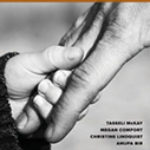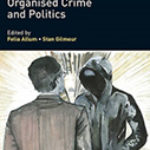The Torture Machine: Racism And Police Violence In Chicago

Author: Flint Taylor
Publisher: Chicago: Haymarket Books, 2019. 434p.
Reviewer: Bocar Ba | September 2020
From 1972 to 1991, Chicago police officers—often, but not always, under the supervision of Commander Jon Burge—tortured and abused more than one hundred Black men in their custody in order to extract confessions. The tactics used ranged from mock executions and racialized psychological abuse, to beatings with telephone books, flashlights, batons, and baseball bats. Some victims described being burned by having their flesh forced against hot radiators in the interrogation room. Some were suffocated with plastic typewriter covers; still others reported having guns put to their head or in their mouths. Burge’s particular specialty, the titular “torture machine,” was a black wired box, similar to a Tucker telephone, used to electrically shock individuals on their genitals, lips and ears. Most of these tactics left no marks.
Damning in its broad strokes and damning in its details, Taylor’s The Torture Machine is a strikingly compelling read. As a lawyer with the People’s Law Office (PLO), Flint Taylor was at the very heart of the decades-long effort to document and prosecute the allegations of police torture. It is not hyperbole to say that without his dedication and that of his colleagues, the story of these cases would have remained an unsubstantiated collection of whispers, a mass of secrets and hearsay, with the evidence and testimony long ago lost to time. The Torture
Machine recounts, in impressive detail, the PLO’s long, complicated fight for some kind of justice.
The story of police torture in Chicago is, ultimately, a story about the state. Burge’s name has become shorthand for the period of history during which most of the known incidents of torture occurred—”the Burge era”—yet Burge did not alone create an institutional culture in which his fellow officers could witness, participate in, or otherwise have knowledge of acts of torture and not feel compelled to speak out. He did not singlehandedly create a sense of impunity on the force, nor was he solely responsible for cultivating a pervasive lack of regard for the value of the lives of the city’s Black citizens. It is a story about the ways in which the City of Chicago, and dozens of individuals in the police force, the state’s attorney’s office, the mayor’s office, and various other levels of government strove, for decades, to turn a blind eye and a deaf ear to the allegations of torture. It is a story about a culture of impunity and of silence—not the code of silence of the streets, but the code of silence that permeates the highest levels of the city’s power structures.
Until the publication of The Torture Machine, the single most comprehensive account of these cases was the work of John Conroy, who, while a staff writer at the Chicago Reader, was one of the few journalists in the city to cover the torture trials while they were happening in the 1990s.
Unlike Conroy’s 2000 book Unspeakable Acts, Ordinary People: The Dynamics of Torture, Taylor does not begin to grapple with the broader political and philosophical dimensions of this history. His book is not a reckoning. Instead, as befits a lawyer, it is a meticulous chronology of events, big and small, that shape a comprehensive understanding of the timeline of these cases—a timeline that, until this point, has not existed as clearly as Taylor lays it out here. That is not to say that Taylor does not know exactly where he stands. “The complete Chicago police torture narrative,” he writes in the conclusion, “traces an unbroken line of white supremacist violence from slavery, Black codes, convict leasing, and lynching to Jim Crow laws…the truth is that it will never be ‘behind us’ and Chicago’s collective conscience will not be cleansed, until and unless the City of Broad Shoulders, and the nation as a whole, reckon fully with the systemic racism of law enforcement, of the criminal courts, of mass incarceration and the death penalty, and of the political power structure.”
Born and raised in Chicago, Jon Burge served as a military police sergeant in Vietnam prior to joining the Chicago Police Department (CPD) in 1972, and it was likely in Vietnam that he learned the tactics and techniques of torture he later deployed against his own fellow citizens.
Stationed at a POW camp in the Mekong Delta, he “interrogated soldiers and stood security for the military intelligence officers [during their interrogations] … interrogations that [were later] revealed to have included murder and torture with electric shock.” As a cop assigned to the CPD’s Area 2 headquarters on the city’s majority-Black South Side, Burge moved quickly up the command hierarchy. Having made sergeant in 1977 and having recently been promoted to lieutenant, he was, in 1981, placed in charge of the Violent Crimes Unit at Area 2. The majority of the torture allegations were concentrated at Area 2 from 1981-1988, when Burge and several of his Area 2 colleagues—part of his “Midnight Crew” of “asskickers” were transferred to Area 3, on the city’s West Side, where other torture allegations would subsequently arise, including from 13-year-old Marcus Wiggins, the youngest of all the victims. In 1989, Richard M. Daley was elected mayor of Chicago after serving seven years as the state’s attorney. During his tenure as state’s attorney, his office failed to take any action against Burge and his colleagues for the more than 50 independent allegations of torture that arose during that period.
Though his main focus is the torture cases, Taylor begins his book in 1969, when, as a second year law student, he is called to the apartment where 21-year-old Black Panther leader Fred Hampton and 22-year-old Panther Mark Clark have just been assassinated, shot in their beds by Chicago police officers in a pre-dawn raid coordinated with the FBI under COINTELPRO. After a thirteen-year legal battle—a small taste of what was to come in the 31-year fight over the torture claims—the PLO won a record $1.85 million settlement from the city, a settlement that Taylor called an “admission of a conspiracy between the FBI and the police.”
Taylor’s involvement with the torture cases began in 1987, when the PLO took on the case of Andrew Wilson, who, along with his brother Jackie Wilson, had been accused of killing Chicago police officers William Fahey and Richard O’Brien five years prior. Prior to his bond hearing in 1982, Andrew Wilson informed the public defender on duty of his injuries and burns, leading her to request an order for medical care from the judge. The following day, armed with the court order and a Polaroid camera, the public defender assigned to his case would come to his cell to interview Wilson about his allegations. The photographs and written documentation of his injuries produced as a result of this examination would prove to be some of the most enduringly convincing evidence in all of the torture cases. Dr. Jack Raba, director of medical services at the Cook County Jail, would also visit Andrew in his cell and subsequently write a letter to CPD superintendent Richard Brzeczek demanding an investigation. Brzeczek, rather than open an investigation and risk jeopardizing the legitimacy of Wilson’s murder confession, passed the buck to the state’s attorney’s office (headed by Richard Daley), who passed it within the state’s attorney’s office to the Special Prosecutions Unit, where it was buried. Both Andrew and Jackie Wilson were convicted on charges of murder and armed robbery, with a death sentence for Andrew and a double life sentence for his brother, but Andrew Wilson continued to pursue his torture claims. On appeal of his criminal case, the Illinois Supreme Court reversed his conviction on the grounds that the state had not shown “’clear and convincing’ evidence” that his confession was not a product of physical abuse and ordered a new trial; though Wilson was once again convicted of the murder, he was not resentenced to death. In 1986, without a lawyer, he filed a civil suit in federal court.
It was in this civil suit that Taylor first came to represent Wilson, and this civil suit that eventually brought the open secret of “systematic” abuse to light. As Wilson’s civil suit was proceeding, an anonymous source Taylor and his team would come to name “Deep Badge” got in touch with them via letters mailed in official CPD envelopes. Presumably an officer at Area 2 themselves, based on their insider knowledge of people and practices there, Deep Badge’s tips would prove key in connecting Taylor and the PLO to other allegations of torture against Burge and his men and, in so doing, transforming Wilson’s case from a one-off complaint to the first salvo in the battle to establish a pattern and practice of torture.
Though there is much to be respected, there is little to be romanticized about the PLO’s decades long fight. Apart from the horrific abuses their clients endured at the hands of the cops, what comes across most clearly in Taylor’s 500-plus page narrative is the brutality of the byzantine legal system itself—the reversals and roadblocks, the shortcomings of jury selection, and the outright antipathy of many judges that easily could have broken a less determined team. The landmark reparations ordinance passed by the Chicago City Council in 2015 does not restore to Madison Hobley, Aaron Patterson, Leroy Orange, or any of the other victims the years of their lives they spent in prison based on false confessions extracted by torture; there is nothing that can repair the physical and psychological trauma of their experiences, including, for many of them, the experience of being sentenced to death row. Moreover, the achievement of some kind of resolution on the torture cases has not put a stop to police abuse in Chicago, as evidenced most notably by the 2014 killing—and subsequent cover-up—of 17-year-old Laquan McDonald.
Suspended from the force in 1991 and fired by the Police Board two years later—twenty years from the first allegations of abuse—Burge was ultimately convicted on charges of perjury and obstruction of justice and sentenced to 54 months in federal prison for falsely denying, in a civil suit brought by the PLO, knowledge of the torture. He continued to collect his approximately $4,000/month pension from the city, receiving nearly a million dollars by the time of his death in 2018. With the exception of his close confederate, Detective John Yucaitis, who was suspended for 15 months for his part in the abuse and torture of Andrew Wilson, none of the sixty-seven other officers named in conjunction with the torture cases have ever been held accountable through the disciplinary mechanisms of the police department or by the city.
Bocar Ba, Assistant Professor of Economics, UC Irvine Economics


